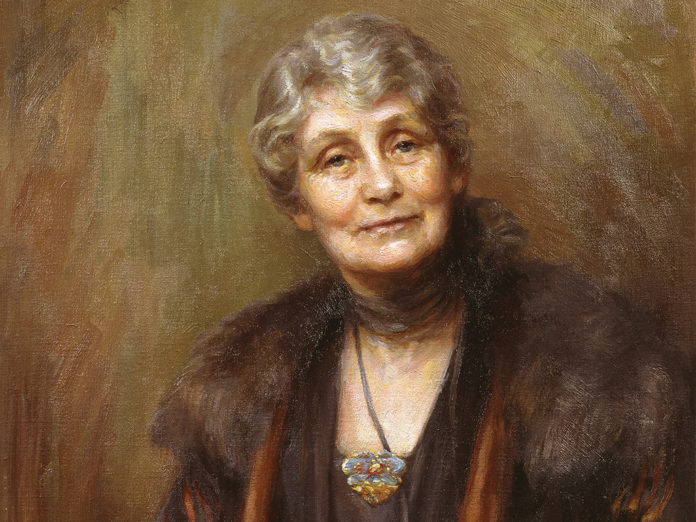In the centenary year of women first gaining the vote, we celebrate the northern roots of one of the leading suffragettes
Given Manchester’s reputation as a hotbed of social and political revolution, it’s somewhat surprising that the Northern Powerhouse has only one statue of a woman to its name. Queen Victoria is currently the only female to cast her stern gaze over commuters, shoppers and visitors in Piccadilly Gardens, right at the heart of the city.
However, thanks to a host of anniversaries highlighting the achievements of one of the city’s most famous daughters, the stony-faced monarch will soon have some overdue competition.
90th Anniversary
This year marks the 90th anniversary of the death of Manchester- born campaigner Emmeline Pankhurst, who led the fight to win the right for women to vote. It’s also 100 years since the introduction of the Representation of the People Act 1918, which granted the vote to all men, plus some women for the first time (as long as they were over 30 and met a property qualification).
Pankhurst played a pivotal role in securing women’s partial – and later full – franchise, and fittingly her former home, now the Pankhurst Centre, on Nelson Street, Manchester, will be the focus of a series of exhibitions and events throughout 2018.
A statue of the feisty and indefatigable woman, who mobilised the first meeting of the Women’s Social and Political Union (WSPU), forerunner of the suffragette movement, in the parlour of the Pankhurst Centre in 1903, has also been commissioned. Hazel Reeves, who created the statue of Sir Nigel Gresley, one of Britain’s most famous steam locomotive engineers, at King’s Cross station in London, has been selected to immortalise her hero.
Subject to planning permission, the statue ‘Rise Up, Women’, will stand in the new garden area of St Peter’s Square in Manchester, and is scheduled to be unveiled on Friday, 14 December 2018 – the 100th anniversary of the first women’s vote in a UK general election.
Gaining the right to vote
Emmeline Pankhurst (née Goulden) was born in Moss Side in 1858, into a family steeped in radical politics. Her grandfather witnessed the Peterloo Massacre in 1819, and her grandmother worked with the Anti-Corn Law League. At the age of 21, Emmeline married barrister Richard Pankhurst, a strong supporter of women’s suffrage and a member of Manchester’s Independent Labour Party (ILP).
When Richard died in 1898, Emmeline’s income fell dramatically, forcing her to move with her children to Nelson Street. However, her appetite for political action remained undimmed, and when she founded the WSPU, its rousing motto was ‘Deeds not Words’.
It soon became clear that Emmeline Pankhurst and her supporters meant business. Demonstrations, window smashing, arson and hunger strikes – culminating in the death of WSPU member Emily Davison when she threw herself under King George V’s horse at the Epsom Derby in 1913 – shocked British society to the core. Like many of her fellow suffragettes, Pankhurst was arrested on numerous occasions and went on hunger strike, resulting in the indignity of violent force-feeding.
Her daughters Sylvia and Christabel also joined the fray. Sylvia created some of the WSPU’s strong visual branding, while law graduate Christabel used her legal knowledge to defend the suffragettes and helped devise the group’s militant strategies.
Later the women went their separate ways: Sylvia wanted to promote broader suffrage, including working-class women and men, and objected to her mother and sister’s increasing militancy and support for the First World War.
Nevertheless, Emmeline Pankhurst scored partial success when some women were given the right to vote after the end of the First World War, and full victory just weeks after her death in June 1928, when the vote was extended to all women.






 © 2024
© 2024